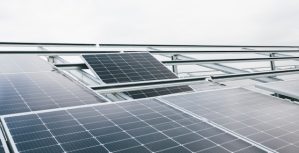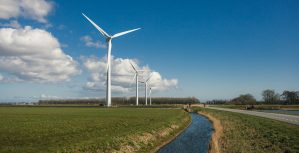What Exactly Does the ECO4 Grant Cover?
More than 3.1 million home improvements have been completed through the Energy Company Obligation (ECO) program since 2013. Through the government-funded ECO program, low-income homes can get funds for renewable energy, insulation, and heating.
The most recent phase, known as ECO4, is now in action and will last until March 2026. As with other government-funded initiatives, you must conduct research to determine your eligibility before participating.
By reading this insightful blog, you can learn more about this most recent version of the ECO Program. We will also go over what exactly is covered by this grant and what makes it different from the previous version.
ECO4 Grant – What Is It?
The latest version of the state-run ECO initiative is known as ECO4. The ECO4 will be in action until March 2026 and is a cornerstone of its Sustainable Warmth Strategy.
This initiative’s primary objective is to assist low-income households in modernizing their heating systems and other energy-efficient components. Through ECO4, the government will be able to assist low-income families with their energy bills and work toward the nation’s 2050 net-zero target.
The majority of financially stable people speak with reliable service providers, just like Envirohomes Renewables. They get tailored advice and services in terms of transitioning to a more sustainable and cost-effective energy configuration.
However, as this is a grant program, it is the perfect solution for low-income families. Therefore, eligible homeowners don’t have to pay back anything.
What’s Exactly Covered in the ECO4 Scheme?
The ECO4 program covers a wide variety of energy-saving solutions that can be applied to existing residences, such as:
- Green Heating Systems
The ECO4 initiative also covers the installation of green heating solutions, including air-source heat pumps and biomass boilers.
These cutting-edge home heating systems may replace out-of-date, inefficient boilers, saving homes up to 25% on their energy expenses.
Households can still profit from solar panel installation under the ECO4 Scheme, but only if a heat pump or biomass boiler has been ruled out.
- Insulation
The most prevalent benefit of the ECO4 Scheme is insulation installation, which helps homeowners save more money each year.
Some of the insulation measures offered through ECO4 are cavity walls, solid walls, room in the roof, and loft insulation, but this depends on particular home conditions.
The ECO4 Scheme adopts a fabric-first strategy, which means that it focuses on making homes more energy-efficient before considering other measures such as heating upgrades.
- Repairing Boilers
Since not all boilers will be replaced with heat pumps, funding is available through the ECO4 initiative to repair and upgrade existing boilers to higher efficiency levels.
Households can get the most out of their boilers and use them for as long as possible (usually 12 years) with the help of the ECO4 Scheme.
The ECO4 Scheme also includes “boiler repair,” which might involve cleaning, repairs, and diagnostics to help boilers get back in working order.
What Distinguishes ECO4 from ECO3?
While the ECO3 and ECO4 have many features, the latter stage targets higher fuel poverty areas and households that are more vulnerable.
ECO4 makes sure that all homes have access to reasonably priced energy by focusing on low-income or vulnerable households receiving benefits.
The ECO4 Scheme will only provide biomass boilers to just a few percent of homeowners. Therefore, most homeowners will contact air-source heat pumps supplier for better insulation and energy efficiency.
One significant distinction between the ECO4 and ECO3 Schemes, however, is that some benefits that were previously available under the ECO3 Scheme are not applicable under the ECO4 Scheme.
This is “to assist better target homeowners who are more likely to be on low incomes,” according to the ECO4 study.
Furthermore, around 134,000 boilers were upgraded within the scope of the ECO3 Scheme; however, under the ECO4 Scheme, the figure is only 5,000.
Share It on :





